Composting Wool from Sheep, Alpacas and Llamas
Wool waste (shoddy) from textile mills has been “composted” by farmers since the start of the industrial revolution. Originally it was left to breakdown in contact with moisture in the soil and it is worth remembering that wool does not need to be composted to be a useful growing medium and source of nutrients. Simply burying wool produces benefits and it is particularly useful in pot-plants where adding wool to the growing substrate can result in higher yield. A newer use use is in making commercially available peat-free compost often with bracken .
Untreated and uncleaned fleeces with faecal matter (daggings) still attached to the have the bonus of containing dirt and faecal although this makes them less pleasant to handle and may contaminate the hands with pathogenic organisms. When used in the preparation of compost sheep wool offers improved water and a supply of nitrogen and trace elements. a wide variety of materials can be used to compost with wool, including wood and bark, green waste, animal manure and bracken.
Most home composters will be aware that old garments made of wool and other natural fibres can be composted. Linen and Hemp are the quickest to breakdown followed by cotton. Wool (including alpaca) may take about a year, while silk takes longer. If added to a conventional household compost bin it is important not to let the wool dominate the mixture using it only in moderation.
The use of an appropriate composting method e.g., hot composting with the right mix of other feedstock can speed the breakdown while treatments during manufacture of garments may prolong it. Wool contains about 10% of nitrogen which is released slowly into the soil. When composting the wool should be cut into small pieces (packaging wool is easily torn) garden plants or other greens are normally added to the bin and mixed at the same time as the wool if using a dalek or similar type of bin. I often add a thin layer of manure in our pallet community bins which will be turned to aerate. It is best not to exceed 25% by volume of wool in the bin. Old wool bedding, which cannot be recycled, can also be composted at the end of its life as bedding.
Composting sheep wool packing
Sheep wool is now available as packing liners to protect fragile items. I have used Puffin packaging compostable sheep’s wool in a recyclable “plastic” bag. Two or three strips of the wool from packaging is sufficient to form a wool layer in a pallet bin when torn up. Tearing up the wool before composting avoids clumping and the possible formation of anaerobic lumps. It also makes it easier to turn compared with leaving it in the original sheets. During the dry summer I incorporate three layers of packaging in our current working bins, plus coffee grounds (because we have them) in the hope that the wool will improve water retention in the hot dry weather.
If composting larger quantities of wool one of the suggested mixes is 25% wool. 50% grass cuttings, 25% stable manure (horse manure was originally used but mature cow manure might be safer as it is less likely to contain herbicide). A smaller proportion of wool with more manure also works. If grass clippings are not available wood chip can used but the mix is slower to compost. Additional greens should speed decomposition.
The photos show Puffin packing being composted in a pallet bin of normal allotment waste. I have also used Woolcool brand. The bin was initially only half filled as I run out of time but it was at themophilic temperature before being completely filled a week later.
Day 12. The bin was uncovered and the contents turned. The wool was little changed but there was a considerable amount of actinomyces present. These bacteria have appeared early in three of the other bins in this row of 5
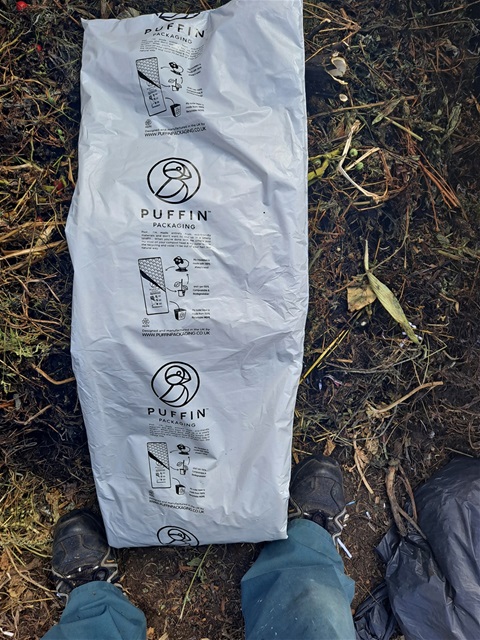
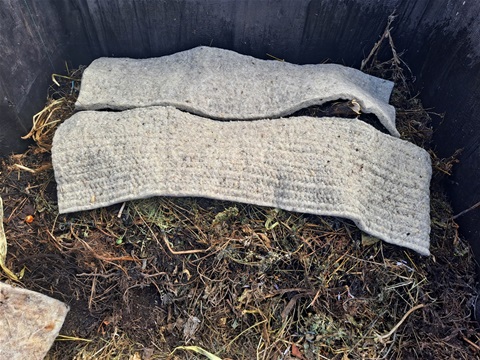
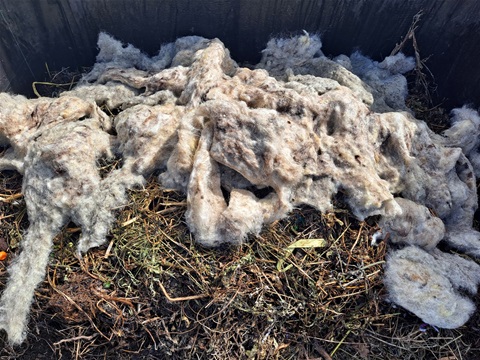
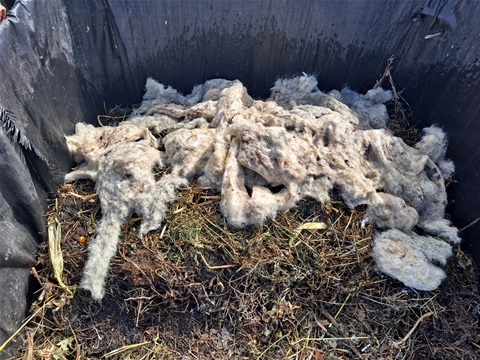
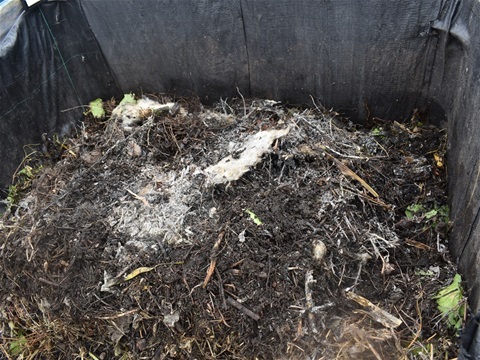
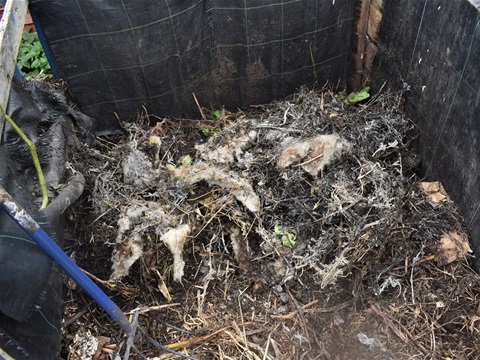
Latest comments
Do you have any data on ' application ' of Aerated Vermi Compost Tea to Mangoes and benneficial outcomes .
Very informative site. Having been away for 5 weeks and returning to evidence of rats under and around the compost bin, I can testify to lack of human activity allowing the rats to get comfortable.
can i use dog manure in compost and mulching leaves?
What is the C and N ratio for coffee chaff?